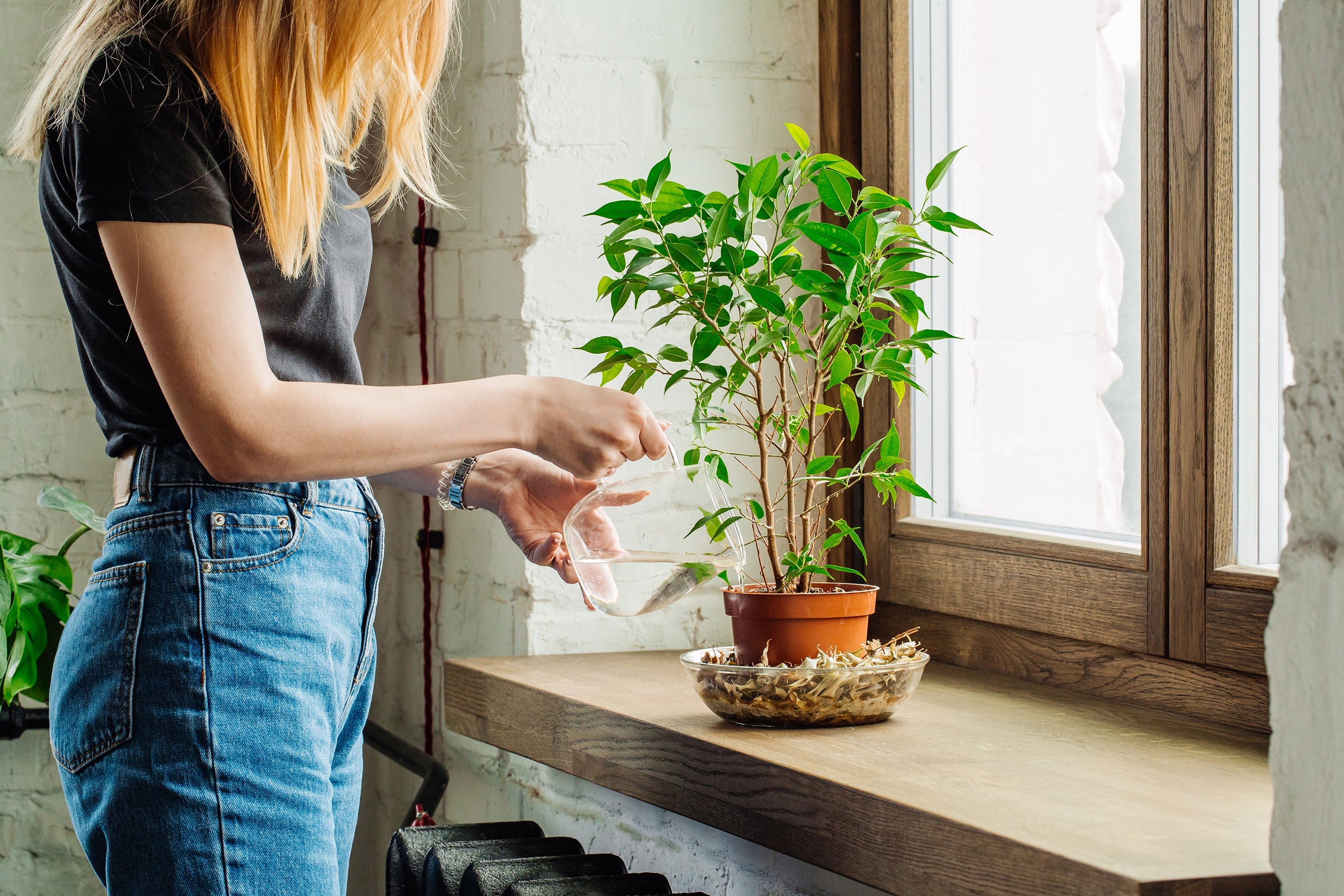Easily the most common question we get here at PLNTD. And also the one that often leads plant beginners astray. Instead, we believe the question should be:
“How do I know when my plant needs to be watered?”
It’s a subtle but important difference. When somebody asks a human being “when do you drink water?” most people will respond “whenever I’m thirsty(?)”
Plants are the same! When they’re watered on a schedule, they’re getting watered whether they need it or not, which can lead to overwatering.
Instead, plants should be watered when they’re thirsty. So, developing the ability to read your plant and recognize when its thirsty for a drink will lead you to care for it with greater control and take guesswork out of your care routine.
How can I tell if my plant needs water?
Most plants like their soil to dry out before the next watering. Of course, there are exceptions to this rule: plants like cacti can stay dry for months at a time, while ferns like their soil to be consistently moist.
The best way to tell if your plant needs water is to check the soil.
Do this by either:
- Using a moisture meter
- Sticking your finger or a chopstick into the soil—if it comes out moist, the soil is still wet
- Feeling the weight of the pot—over time, you’ll be able to tell that the pot is lighter when dry, and heavier when wet.
No plant likes waterlogged, soggy soil. If the consistency is muddy or the soil clumps together, your soil retains too much water and should be replaced with a well-draining mix.
If you’re uncertain, it’s almost always better to underwater than to overwater your plant. Noticing signs of under-watering can teach you how often your plant gets thirsty—although, of course, you don’t want to consistently underwater.
I believe my plant is thirsty, how much water do I give it?
When watering your plant, you want to ensure:
- The soil is completely saturated
- No water is trapped at the bottom of the pot
- The soil is moist, but never soggy
The two most common watering methods are:
-
Top watering:
Slowly water the top of the soil, turning the pot if necessary to ensure the soil is watered on all sides. Keep going until water is running out of the drainage hole at the bottom of the pot, then empty the tray beneath the pot so that no water is left standing.
Make sure to water the soil, not the plant/leaves; this will help prevent bacterial infections, fungal infections, and other health issues -
Bottom watering:
Fill a container shallower than your pot with water. Set the pot inside and allow the plant to soak up the water. Remove the plant from the container when the top of the soil is completely saturated.
These are both excellent methods. However, even bottom-waterers should water from the top occasionally. This rinses the soil of any built-up salts, fertilizer, and other debris.
How do I know if I’m underwatering my plant?
Symptoms of under watering include:
- Droopy, flimsy leaves that retain their natural color
- Older leaves that turn brown and fall off
- Brown, crispy leaf edges
- Wrinkles in succulent leaves, typically on the underside of the leaf
Underwatered plants can typically recover when given a thorough watering
Help! I think I overwatered my Plant!
Here are some signs of overwatering:
- Transparent, yellowed leaves (especially in succulents)
- Dark, mushy roots, stem, or leaves that appear rotted
- Droopy leaves that turn yellow or develop brown spots
Many symptoms of overwatering are also symptoms of underwatering. This is due to root rot killing an overwatered plant’s roots, leaving it unable to take in water.
In the best case scenario the roots aren’t damaged by rot. In this case:
- Allow the soil to dry out completely before the next watering. (This can take up to a couple weeks depending on your soil—if your soil stays wet longer, it likely needs to be replaced with a better-draining soil.)
A bad scenario is a mild case of root rot. This can be treated by:
- Removing the wet soil and replacing it with dry soil.
- Checking the plant’s roots for rot and trimming away any brown, dead roots before repotting.
The worst case scenario is a plant that’s roots have completely rotted. In this case:
- Propagate the healthy leaves or take a stem cutting. (Only some plants can be propagated in this way.)
- Throw away or compost the plant :(
What impacts how often my plant gets thirsty? Does this change?
Environmental changes and a plant’s lifecycle both help determine how thirsty a plant is at any point in time.
Some factors to consider are:
- Plants need less water when they are dormant, and more during the growing season
- Plants in direct sun need more water than they do when given indirect lighting
- If it’s hot inside, your plants will need more water
- Air and heating can also impact how much water your plants need
Some final watering tips
- Potted plants require well-draining soil. If the soil is too compact, it will hold onto water, leading to overwatering even if you don’t water too often.
- Always use a pot with a drainage hole to avoid overwatering and root rot.
- Adjust your watering based on the sunlight your plant receives—more water in high light, and less in low light.
